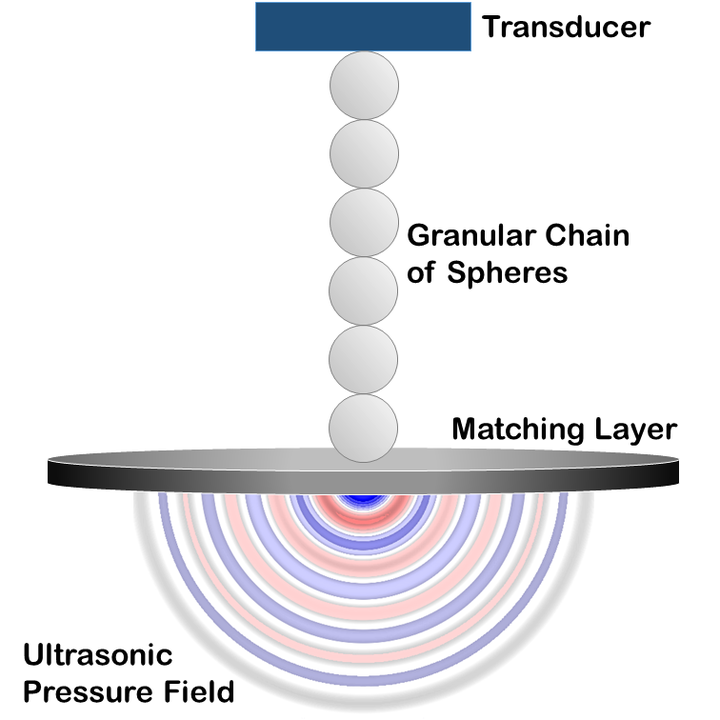Generation of Ultrasound Pulses in Water Using Granular Chains with a Finite Matching Layer

Abstract
Wave propagation in granular chains is subject to dispersive effects as well as nonlinear effects arising from the Hertzian contact law. This enables the formation of wideband pulses, which is a desirable feature in the context of diagnostic and therapeutic ultrasound applications. However, coupling of the ultrasonic energy from a chain of spheres into biological tissue is a big challenge. In order to improve the energy transfer efficiency into biological materials, a matching layer is required. A prototype device is designed to address this by using six aluminum spheres and a vitreous carbon matching layer. The matching layer and the precompression force are selected specifically to maximize the acoustic pressure in water and its bandwidth. The designed device generates a train of wideband ultrasonic pulses from a narrow-band input with a center frequency of 73 kHz. An analytical model is created to simulate the behavior of a matching layer as a flexible thin plate clamped from the edges. This model is then verified using free-field hydrophone measurements in water, which successfully predict the increased bandwidth by generation of harmonics. The shapes of the measured and predicted waveforms are compared by calculating the normalized cross-correlation, which shows 83% similarity between both. Since the generation of harmonics is of interest in this study, the total harmonic distortion (THD) and the −6 dB bandwidth of the signals are used to analyze signal fidelity between the hydrophone measurements and the model predictions. The acoustic signals in water have a root-mean-square THD of 73%, and the model predicts a root-mean-square THD of 78%. The −6 dB bandwidths of individual pulses measured by a hydrophone and predicted with the model are 280 and 252 kHz, respectively. At these high ultrasonic frequencies, it is an experimental demonstration of resonant chains operating in water with a matching layer.